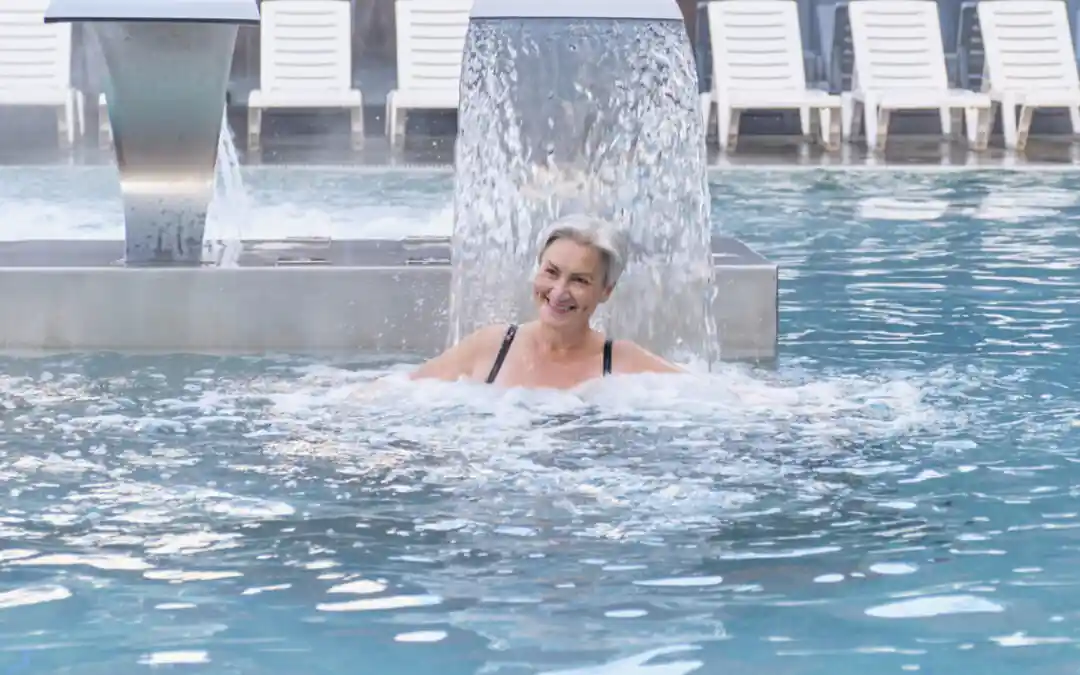
by Joel Griffiths | 7th Jan, 2025 | Health
If you’re living with arthritis, you know how challenging it can be to manage the pain and discomfort that comes with the condition. While medication and physical therapy can help, another powerful treatment option is hydrotherapy, which is often delivered through spa baths. Hydrotherapy, also known as water therapy, has been shown to provide significant relief from the symptoms of arthritis by utilising the healing properties of water.
In this article, we will explore how spa baths help arthritis, the benefits of hydrotherapy, and why it’s an effective solution for managing joint pain, stiffness, and inflammation. Whether you’re considering installing a walk-in bath or simply want to explore natural pain relief methods, hydrotherapy could be just the therapy you need.
What is Hydrotherapy and How Does it Work?
Hydrotherapy involves using water—whether in the form of a bath, shower, or pool—to treat various health conditions. When it comes to arthritis, hydrotherapy spa baths provide several key benefits that ease joint pain and improve mobility. The warm water relaxes muscles, soothes sore joints, and promotes circulation, helping to reduce pain and stiffness.
The buoyancy of water also plays a critical role. When you’re submerged in water, your body weight is partially supported by the water’s buoyant force. This means less stress is placed on your joints, making it easier to move and perform exercises. This can be especially beneficial for people with arthritis, as it allows them to move without experiencing the pain or discomfort that often comes with weight-bearing activities.
In a hydrotherapy spa bath, the combination of warm water, buoyancy, and massaging jets works together to alleviate the pain, reduce inflammation, and promote overall joint mobility. Let’s take a closer look at the specific benefits of hydrotherapy for arthritis.
1. Pain Relief and Reduced Inflammation
One of the most immediate benefits of hydrotherapy is pain relief. Arthritis pain often occurs due to inflammation in the joints, which can result in stiffness and discomfort. Warm water has been shown to increase blood flow and promote the dilation of blood vessels, which helps to reduce inflammation and pain.
When you soak in a hydrotherapy spa bath, the warm water targets painful areas of the body and provides a soothing, calming effect. The massaging action from jets in the spa bath also works to relieve muscle tension and promote relaxation, which can further alleviate pain. Additionally, the buoyancy of the water reduces the pressure on your joints, making it easier to move and stretch without exacerbating pain.
2. Improved Joint Mobility and Flexibility
For people with arthritis, maintaining joint mobility and flexibility is essential for daily activities. Unfortunately, the pain and stiffness associated with arthritis can make it difficult to move freely. Hydrotherapy spa baths can be a great way to increase your range of motion and flexibility without putting undue strain on your joints.
As the warm water relaxes muscles and softens the tissues surrounding the joints, it makes it easier to perform stretches or exercises in the bath. The buoyancy of the water also helps reduce the pressure on your joints, allowing for greater movement. Gentle, low-impact exercises like leg lifts, arm movements, and gentle stretching can be done in the comfort of a spa bath to help improve mobility and flexibility over time.
3. Stress Reduction and Relaxation
Arthritis pain can take a toll on your emotional well-being, leading to stress, anxiety, and frustration. Hydrotherapy has long been associated with relaxation and stress reduction, which is particularly important for people with chronic conditions like arthritis.
The warm water in a hydrotherapy spa bath promotes the release of endorphins, the body’s natural “feel-good” hormones. These hormones help reduce feelings of pain and improve overall mood. The gentle massaging action from the spa bath jets can also promote relaxation by targeting pressure points and soothing tired muscles. The combination of relaxation, pain relief, and improved circulation can help reduce the emotional burden that comes with living with arthritis.
Request a Free Brochure
Simply fill out a quick form and see how we can transform the way you bathe.
Request Free Brochure
4. Enhanced Circulation and Healing
Good circulation is essential for overall health, but it is particularly important for people with arthritis, as it helps to deliver oxygen and nutrients to the affected joints and tissues. Hydrotherapy can significantly improve circulation, which in turn helps to promote healing and repair of damaged tissues.
The warm water in a hydrotherapy spa bath encourages blood flow and helps flush out toxins, providing more oxygen to the muscles and joints. The increased blood circulation can reduce swelling and stiffness, while also aiding in the recovery of inflamed areas. For those suffering from rheumatoid arthritis or osteoarthritis, improving circulation can be a key factor in managing symptoms and slowing the progression of the condition.
5. A Safer Way to Exercise
Exercise is one of the most effective ways to manage arthritis, but traditional weight-bearing exercises can sometimes be too painful or difficult. Hydrotherapy spa baths provide a safer, low-impact way to exercise while still reaping the benefits of movement.
By performing gentle exercises in the water, such as walking, stretching, or leg lifts, you can improve joint strength, flexibility, and overall function without putting too much strain on your body. The buoyancy of the water helps support your weight, allowing for smoother, pain-free movements. Hydrotherapy can be particularly beneficial for those with arthritis in their knees, hips, or spine, where weight-bearing activities can cause additional stress and pain.
6. Improved Sleep Quality
Chronic pain from arthritis can make it difficult to sleep, leading to fatigue and further pain during the day. Hydrotherapy can help promote better sleep by relaxing the body and relieving pain before bedtime. Soaking in a warm hydrotherapy spa bath can ease muscle tension, relax the nervous system, and prepare your body for a restful night’s sleep.
The soothing effect of hydrotherapy is particularly effective when used as part of a bedtime routine. Spending 20-30 minutes in a warm spa bath can help ease you into a peaceful, restorative sleep, which is vital for managing the symptoms of arthritis.
Incorporating Hydrotherapy into Your Daily Routine
If you’re considering using hydrotherapy to help manage arthritis symptoms, it’s important to make it part of your daily routine. You don’t need to spend hours in the spa bath—just 20 to 30 minutes per session can provide significant relief.
Installing a walk-in bath or mobility-style bath with hydrotherapy jets can make the process easier and more accessible, especially if you have limited mobility. These baths are designed to provide safe and comfortable access while allowing you to benefit from the therapeutic effects of hydrotherapy. You can find a range of mobility-style baths at Mobility Plus, ensuring that you get the right fit for your needs.
If you’re concerned about bathroom accessibility or safety while using hydrotherapy, take a look at Mobility Plus’ disabled bathroom solutions. There are plenty of options available to make your bathroom both functional and safe for hydrotherapy use.
Hydrotherapy spa baths offer numerous benefits for individuals with arthritis, including pain relief, improved joint mobility, reduced inflammation, and stress relief. Incorporating hydrotherapy into your daily routine can greatly improve your quality of life and provide an effective, natural way to manage arthritis symptoms. Whether you’re looking to relax, reduce pain, or simply improve your overall well-being, a hydrotherapy spa bath could be a game-changer.
To learn more about incorporating hydrotherapy into your bathroom and making your space more accessible, check out Mobility Plus’ blog on bathroom renovations and their tips for choosing the right walk-in shower or mobility-friendly features for your home.
By investing in hydrotherapy, you’re allowing your body to heal, reduce pain, and improve overall mobility. If you’re unsure where to start, consider speaking with a healthcare professional to determine how hydrotherapy can best fit into your arthritis management plan.
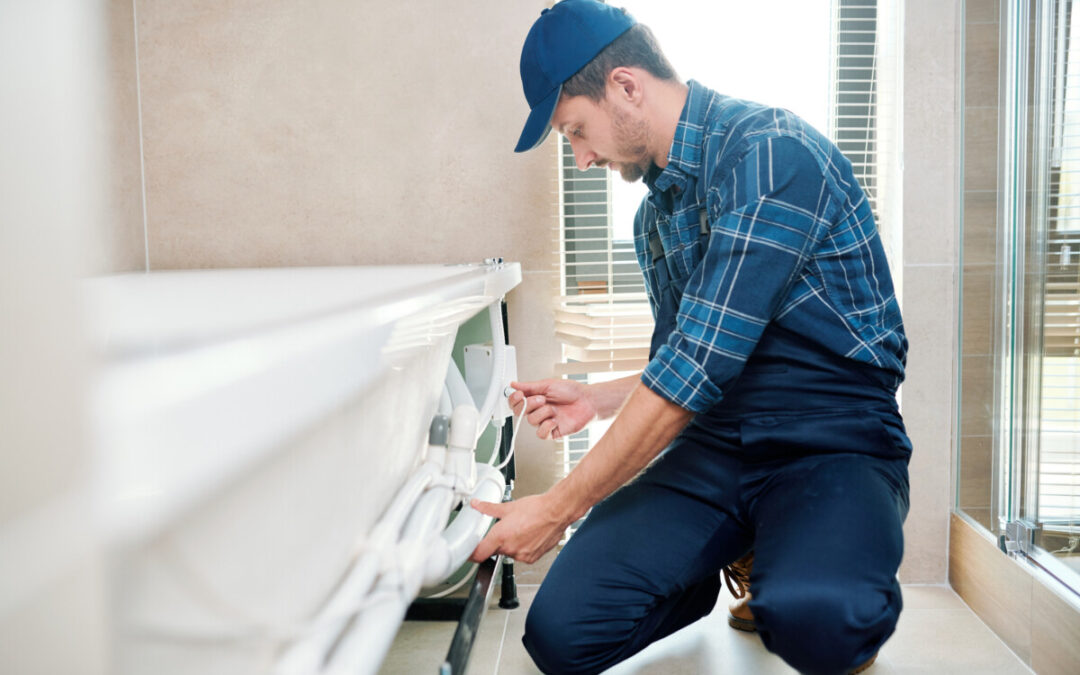
by Joel Griffiths | 7th Aug, 2024 | Accessibility, Bathroom, Health, news
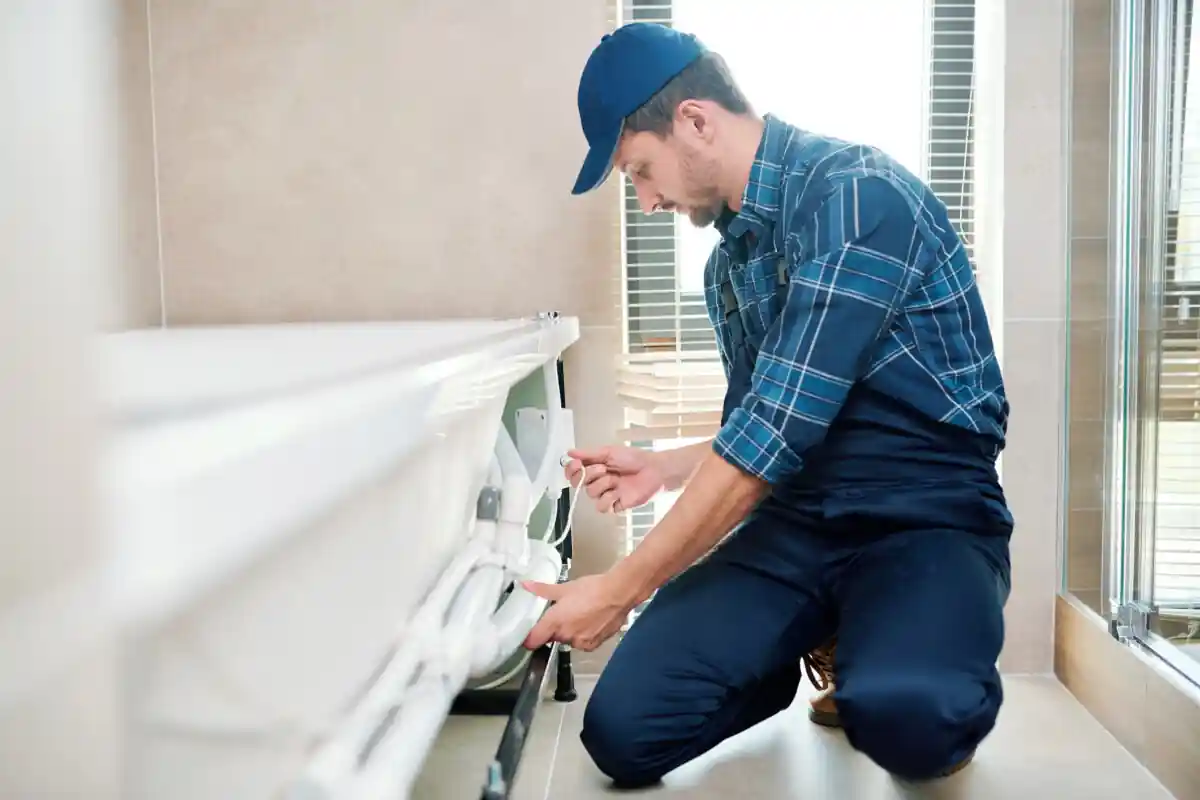
Bathroom renovations are a wonderful way to transform your functional space into a spa-like sanctuary where you can relax and unwind. Whether you’re looking to renovate because you want to upgrade your facilities, or you’d like to swap your standard units for disabled-friendly ones, it’s important to have a clear understanding of what the process entails.
Of course, a huge part of this is the renovation cost. While exact numbers can vary massively, there are several factors that will determine how much your total expenditure will be. Let’s delve into the details of how much does a bathroom renovation cost?
What are the typical bathroom installation costs?
When you are renovating your bathroom completely, there are lots of elements that need to be bought that will all have a significant role in the overall cost. For example, what flooring are you considering – expertly soured marble or easy-to-access vinyl? Then, regarding your fixtures (toilet, basin, bath, etc.), would you prefer designer or budget-friendly styles? In this part of our guide, we’re going to delve into each of the typical fixtures and elements that you’ll want to consider, and how they will affect your bathroom installation cost.
Toilet
A toilet is one of the most important and practical features of your new bathroom. However, the cost can vary from hundreds to thousands. So, what is the difference? A standard two-piece toilet is a traditional choice – consisting of a separate bowl and tank that are joined during construction. They are normally a more cost-effective option as they are simple to fit and commonly produced. A more expensive option is a wall-mounted model.
These sleek designs take up less floor space and have the bulky tank hidden or boxed into the wall. However, because of the additional work it takes to fit them, they will come at a higher cost. If you really want a luxurious final addition to your bathroom, you may consider a smart toilet. These clever designs have high-tech features such as heated seats and bidet functions. As they require an electric connection, these do tend to come at the higher end of the expense scale due to increased fitting cost as well as being a pricier model. The type of toilet you go for will also impact the ease of cleaning.
Basin
Similarly, there are different basins that can soon stack up the cost of your overall renovation. Pedestal basins are probably the most cost-effective. They consist of a simple bowl, attached to the ground on a pedestal that conceals the plumbing. If you prefer a more sleek, contemporary look – you might consider a wall-mounted unit.
These give the appearance of a larger space, as the space underneath is usually clear, and the plumbing is concealed into the wall. However, with that comes larger installation costs. Then you’ve got vanity units that hold bowl basins – these are easy to plumb in and can easily hide pipes, however the unit themself is often an expensive cost.
Bath / shower
There are many bath and shower units to pick from – including your standard tub bath, cubicle shower, mobility style baths that allow easy access and walk-in showers that have a minimal threshold to the floor. These all vary significantly in cost, mainly due to the plumbing works and floor preparation needed to install.
Taps
When it comes to taps, you can get your classic mixer and pillar options, which all come at a relatively standard cost. Then, you have wall-mounted options that’ll need to be plumbed in and concealed into the wall, therefore raising the cost due to installation. If you want the latest high-tech offering, you can get sensor taps that come on and off automatically when in use. However, due to the wiring involved for these – the installation is usually a lot more.
Flooring and lighting
We’ve spoken about the most common fixtures, and now it’s time to consider your flooring and lighting. Common bathroom flooring could be ceramic tiles, natural stone, vinyl flooring or laminate flooring. These all vary wildly in cost, with vinyl being an easy-to-source and accessible choice and tiles and stone rising with the more premium they are. Other things to consider that may raise your bathroom renovation price would be whether you’d like a waterproofing course underneath your floor. These are vital in mobility wet rooms.
In terms of lighting, you can have fitted in strip lights to accentuate certain parts of your bathroom. Or, you can go for regular wall and ceiling lights. The more electrical work needed to wire these will of course add to the cost, as will each light and bulb itself.
Extra features
With any renovation, there will always be additional extras that will bump up the cost of your renovation. From in-built speakers to thermo jets in your pool – there are so many things to consider, but ultimately, it comes down to how much you have budgeted and what luxuries you can afford.
Request a Free Brochure
Simply fill out a quick form and see how we can transform the way you bathe.
Request Free Brochure
How much does an average bathroom renovation cost?
We have spoken about the exacting things that can vary as part of your bathroom renovation and how you can budget for each specific fixture. However, what other things should be factored in when wondering how much an average bathroom renovation cost?
First of all, how much work do you need completing by a tradesman? As well as a plumber, you may need damp specialists, electricians, tilers and even carpenters. Think about which labourers you will need for your project – as this will add to the cost.
It will also come down to the scope of your renovations. Are you looking for a full disabled bathroom makeover? Or do you just want to upgrade some fixtures?
Why do bathroom renovation costs vary?
Bathroom renovation costs can vary massively due to several factors. Of course, we’ve already detailed some of these, but here are some other things to consider:
Where in the country you are based
Like anything, tradesman and labour costs are different depending on where you are. It all comes down to supply and demand – as well as local market rates.
The size of your bathroom
It may sound obvious – but the bigger your space, the more cost involved. That’s because you’ll be using more materials, which in turn takes a longer time to fit.
Special features
The complexity of the job at hand will always add to the overall cost. For example, if you wanted a carpenter to do special in-built cupboards. These are the areas that can quickly stack up in price.
Are there any hidden bathroom costs?
Hopefully your bathroom renovation is smooth sailing without any issues. However, when things go wrong, you might see some extra costs. For example, discovering water damage when you remove old units. Or, unexpected delays if your new fixtures need sourcing from somewhere specialist.
The average bathroom renovation cost in the UK can be influenced by multiple factors, from the fixtures you want included to the labour costs included. By understanding all the elements involved, you can begin to form a realistic budget and know what places you can cut back if you need to.
Whether you want a simple reconfiguration for an easier bathing routine or you want a full luxurious makeover, careful planning should be involved to make sure it’s within your budget and you can get exactly what you want from your space.
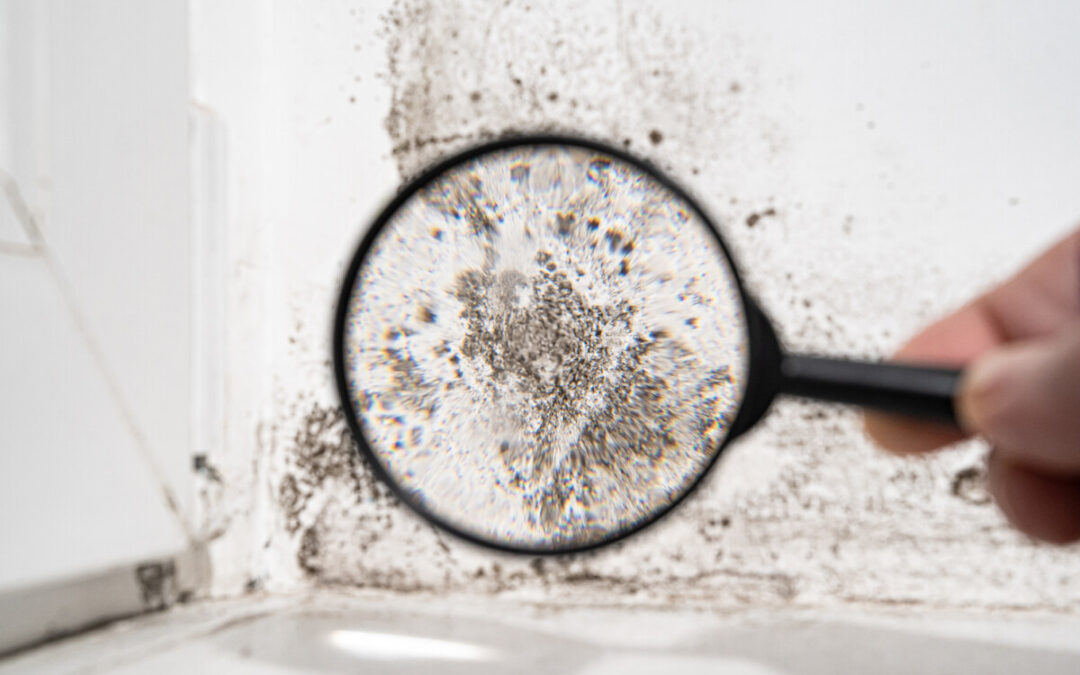
by Joel Griffiths | 7th Aug, 2024 | Health
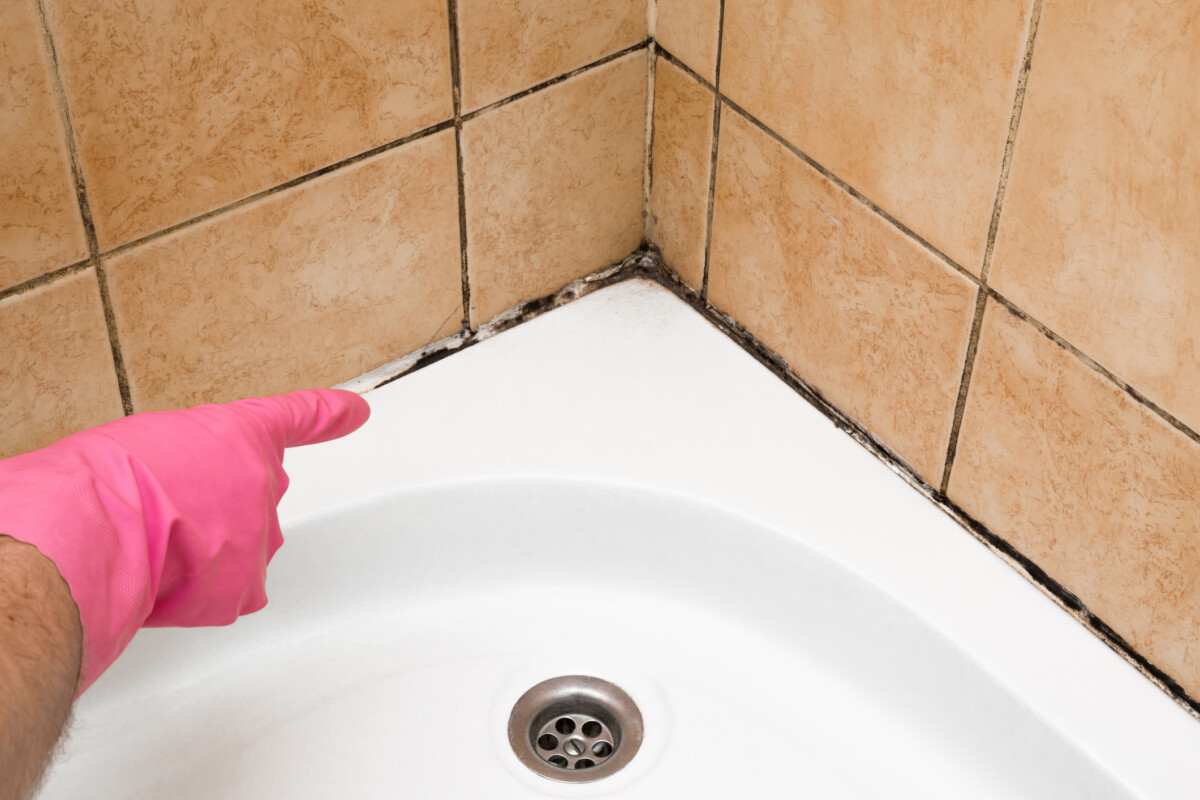
Mould is a common (and pesky) problem in many households across the UK. It can especially become a problem in bathrooms because of the persistent damp conditions and high humidity in this area.
Mould can be an unsightly issue to have in your home, but not only that, it can become a health risk if not dealt with correctly. So, are you wondering how to get rid of mould in your bathroom? You’re in the right place, as we’ve detailed how you can get every surface gleaming, and back to the safe and healthy environment you deserve. Read on to understand everything from how to remove existing mould to how build-up can be prevented going forward.
Tools and materials you’ll need
Before you begin to carry out any work to effectively remove mouldy sealant in your bathroom or walk-in shower, you’ll need a few pieces of essential tools and equipment. These are:
- A utility knife or a sealant remover tool that will cut and scrape away old sealant that has mould
- A cleaning solution to treat the area before reapplying sealant. This could be a commercial-grade mould spray, or you can make your own solution using bleach and water
- A sponge, cloth or scrubbing brush to apply and remove the cleaning solution
- Protective personal equipment such as rubber gloves and a face mask that’ll prevent you and your skin from coming into contact with any harsh chemicals or mould spores
- A new, mould-resistant bathroom sealant
- A caulking gun to neatly apply
If you have everything listed above to hand, then this will ensure a smooth process when you go to tackle any mould in your bathroom.
How to get rid of mould in your bathroom
We’ve detailed how to say farewell to any bathroom mould in just a few easy steps – showing that it’s simple to do yourself and keep on top of any issues.
Step 1: Clean the affected area
Making sure that you have your protective gear on – it’s time to get to work with an easy bathroom clean, to remove mould that may be in the area.
To do this, use a ready-to-go solution of commercial mould remover, or fill a spray bottle with a bleach solution. Your mix should be one part bleach to three parts water.
Once you’re equipped with your cleaner, spray it generously to the affected areas and let it sit for around 10 minutes.
After letting it soak into the mould for 10 minutes you can get to scrubbing. Take a brush, sponge or cloth and rub the affected surfaces thoroughly. Areas that can be commonly affected are grout between tiles, hard-to-reach areas like behind taps and hidden crevices where you keep toiletries and bottles.
Once you’ve cleaned the surface, you can now rinse off any residue. Do this easily with your bathroom shower head, or alternatively fill the bath or a bucket with fresh water and use this to wipe over the surface.
After rinsing, you’ll want to dry the surface off using an old towel or cloth.
If you want more tips on how to clean your bathroom without straining your back, click through here.
Step 2: Remove and replace bathroom sealant
Once you’re working with a clean canvas, you can now begin to remove your old, mould-covered sealant.
Most DIY stores will sell kits to help you remove old sealant, but it can also be cut away quite easily with a utility knife.
To do this, simply slice down the edge where the sealant meets the wall and pry it away.
If there are any areas that are particularly stubborn, you might find it easier to use tweezers or a small pair of pliers to pull it off.
You should now have a sealant clear area, but if there are still residual pieces, you can scrape these off carefully using your utility knife.
It’s now time to clean your surface again, particularly the part of the wall that was previously covered by sealant. By doing this it ensures any mould or mildew particles that are still lingering on the surface are killed before a new sealant is applied.
To apply a new sealant, you’ll want to put a mould-resistant bathroom sealant into your caulking gun. Using the tool, gently squeeze the formula evenly across all edges, joints and seams in your bathroom. You should make sure you’re applying this anywhere that water may leak or run – to prevent bigger mould issues happening in the future.
Once you’ve applied the sealant, you can run your finger along it to smooth it out. There are also caulking tools available at most DIY stores to give you that same seamless finish.
The sealant will take a while to cure and set to solid. Read the tube that you used for full drying times, however we’d recommend leaving it for 24 hours before using your bathroom.
Step 3: Mould-proof your bathroom for the future
Voila, all traces of mould have been cleaned and removed from your standard or disabled bathroom and it’s back to a sparkling condition. But, how do you prevent it from coming back in the future?
This step gives you practical advice on how you can avoid any mould reappearing:
Mould thrives in humid, warm environments, so the best way to improve the atmosphere of your bathroom is to make sure it’s well-ventilated. That could be by using an extractor fan, keeping windows open after showering, or even using a dehumidifier.
As well as lowering the humidity in your bathroom, it’s important to keep on top of cleaning. There are plenty of mould prevention cleaners that can be incorporated into your usual cleaning routine. Make sure you focus on those hidden spots under taps and in corners, as well as on grout, as these are the most common places for mould to grow.
Request a Free Brochure
Simply fill out a quick form and see how we can transform the way you bathe.
Request Free Brochure
FAQs
What is black mould in a bathroom and why does it appear?
Black mould is a type of fungus that appears as dark green or black coloured blobs. It thrives in humid and damp conditions – hence why it appears so often in bathrooms.
Is mould in the bathroom dangerous for your health?
Mould, particularly black mould is associated with a variety of health problems, hence why we encourage anyone to follow the steps on this guide to remove it as soon as possible. That’s because inhaling spores from mould can cause respiratory issues like coughing and throat irritation. As well as that, it can have toxic effects if you’re exposed to it for a prolonged period.
How can I identify mould in my bathroom?
There are several types of mould that may appear in your bathroom. The most commonly recognised due to its dark shade is black mould. This appears in dark patches and will contrast against your surfaces, making it easy to spot. White mould is a fuzzy type of mould that you might see on walls. Another way that you might first notice mould is through its scent – which is often a damp, musty smell.
Can I prevent mould from forming in my bathroom?
Yes! We’ve detailed some easy ways to prevent mould from forming. These are having good ventilation in your bathroom by opening windows and using extractor fans. It also includes cleaning regularly with preventative mould sprays.
Maintaining a mould-free bathroom is essential, not only for keeping a clean home, but ensuring its longevity. It is also vital for ensuring your own personal good health. We recommend being vigilant when spotting mould in your bathroom, and if you do come across areas of concern, to treat them as outlined in this guide.

by mobilityplus | 3rd Dec, 2023 | Health

Taking a shower can provide us with some much-needed reflection time, whether this be before the start of the day or at the end of it. Most of the time though, people in the UK are taking warm showers, as they are generally quite nice and pleasant and allow us to ease into the day. However, a growing number of people in the country are switching to have cold showers, because they have a wide range of health benefits.
In this article, we discuss the health benefits of a cold-water shower that you can take advantage of. Cold showers may not be everyone’s cup of tea at first, but once you find out about some of these, you may begin to realise why they are becoming more popular.
What is cold water therapy?
You might’ve also come across this phrase before. Cold water therapy, also referred to as cold hydrotherapy or cold water immersion, is a rejuvenating practice where your body is exposed to cold water, typically below 15°C, to promote health and well-being.
There are many ways one can undertake cold water therapy like an ice bath or outdoor swimming, but today we’re going to be focusing specifically on cold water showers and its benefits.
Looking for better temperature bathing control?
Simply fill out a quick form and see how we can transform the way you bathe.
Request Free Brochure
- Increases alertness
- Healthier hair
- Improves blood circulation
- Stimulates weight loss
- Speeds up muscle soreness and recovery
- Eases stress
- Relieves depression
- Improves emotional resilience
- Boost fertility
- Anti-ageing
1. Increases alertness
For those who find it a little tricky to wake up in the morning, a cold-water shower is the remedy that you need. One benefit of a cold shower is it has lasting effects to amp up your alertness for the day. History tells the tales of Spartans using cold water showers to enhance mental and physical strength to make them more alert in combat.
Dr. David Greuner, Cardiovascular surgeon of NYC Surgical Associates said “Cold showers are a great antidote for waking you up in the morning after a late night. Anything that surprises or shocks you will bring on the fight or flight response and raise your level of alertness”. This sounds a little distressing for first thing in the morning, but if you’re feeling a tad groggy then this could be just the thing you need to wake up and seize the day!
2. Healthier hair
To give your hair a boost, a cold shower will help lock in moisture after you shampoo and condition your hair. It helps to tighten cuticles in your scalp to make sure your hair is well rooted, which can lower the chances of hair loss. It’s a win-win.
3. Improves blood circulation
As we age, our blood circulation tends to decline, and there is greater importance to counteract the overall effect on the body. A perhaps lesser-known benefit of a cold shower is that healthy blood circulation provides oxygen to the brain and other vital organs. Interestingly, alternating between hot and cold water while you shower can help improve overall blood circulation.
4. Stimulates weight loss
Could this cold shower benefit be the weight loss hack you’ve been waiting for? Scandinavian researchers found that cold temperatures increase the metabolic rate of fat, and if this practice is sustained it can help strip away 9 pounds of fat a year. The researchers would still recommend a healthy diet and consistent exercise to support this weight loss.
5. Speeds up muscle soreness and recovery
Cold water therapy is widely known to speed up the process of muscle repair. Athletes often take cold showers or ice baths to relax their muscles after a hardcore workout or intense match. In this study, the researchers analysed 360 people across 17 trials who plugged themselves in cold water after rigorous exercise. They found that cold water baths were very effective in reducing muscle soreness.
6. Eases stress
Stress is one of the most common health concerns around the globe, and many of us are seeking the most effective ways to manage this. The “shock” effect to the skin from getting a cold shower can make people more tolerant of stress, particularly if this is repeated over time. This study shows that cold showers are a form of oxidative stress on the nervous system, and over time the participants felt more “calm”.
7. Relieves depression
Research shows that consistent blasts of ice-cold showers are great for improving levels of wellbeing. Dr Nikolai Shevchuk believes that we need to be exposed to more thermal stress on the body, as it releases hormones that are often found in anti-depressant medications.
8. Improves emotional resilience
As previously mentioned, taking consistent showers can help you tolerate stress, which, in turn, improves your emotional resilience. Regular and consistent cold showers can ensure that your body will get used to the sensations.
9. Boost fertility
Although there isn’t a wide range of research, some small studies have found that there is evidence that suggests that cold showers can increase male fertility to some degree. Hot baths have been shown to reduce the level of sperm count, and cold showers are a good counter activity to reverse the effects.
10. Anti-ageing
With better blood circulation, your skin will also appear healthier and clearer as it will help nourish the skin tissue cells. The more oxygen circulated around the body, the more radiant and polished the skin will feel and look. Many studies have also been conducted to show that stress can age the body, and cold showers are a good combat for this too.
Conclusion
Cold showers are a great example to add to your self-care routine. We’re automatically accustomed to hot showers, particularly in the winter season; but perhaps this could be a new routine of relaxing after a long day or before the day has begun.
Taking the plunge into having regular cold showers can be daunting, but as we’ve seen there are significant health benefits. You do not need to switch completely to cold showers, but potentially alternating between cold and hot can be a good way to ease into the process and reward yourself if you’re finding it slightly harder to become accustomed to!
Cold showers are a great example to add to your self-care routine. We’re automatically accustomed to hot showers, particularly in the winter season; but perhaps this could be a new way of relaxing after a long day. At Mobility Plus, our wellbeing and health are a priority, take a look at our other health-related articles on our blog here. If you are interested in easy-access bathing solutions, see our walk-in bath and shower ranges.
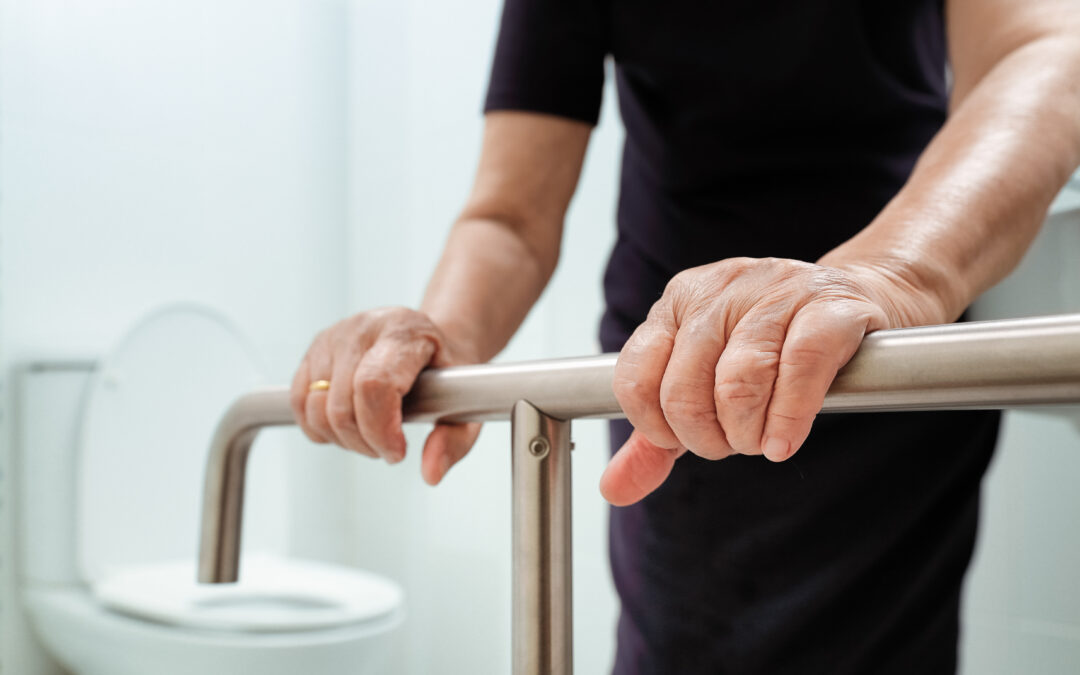
by Jon Pearce | 9th Mar, 2023 | Health
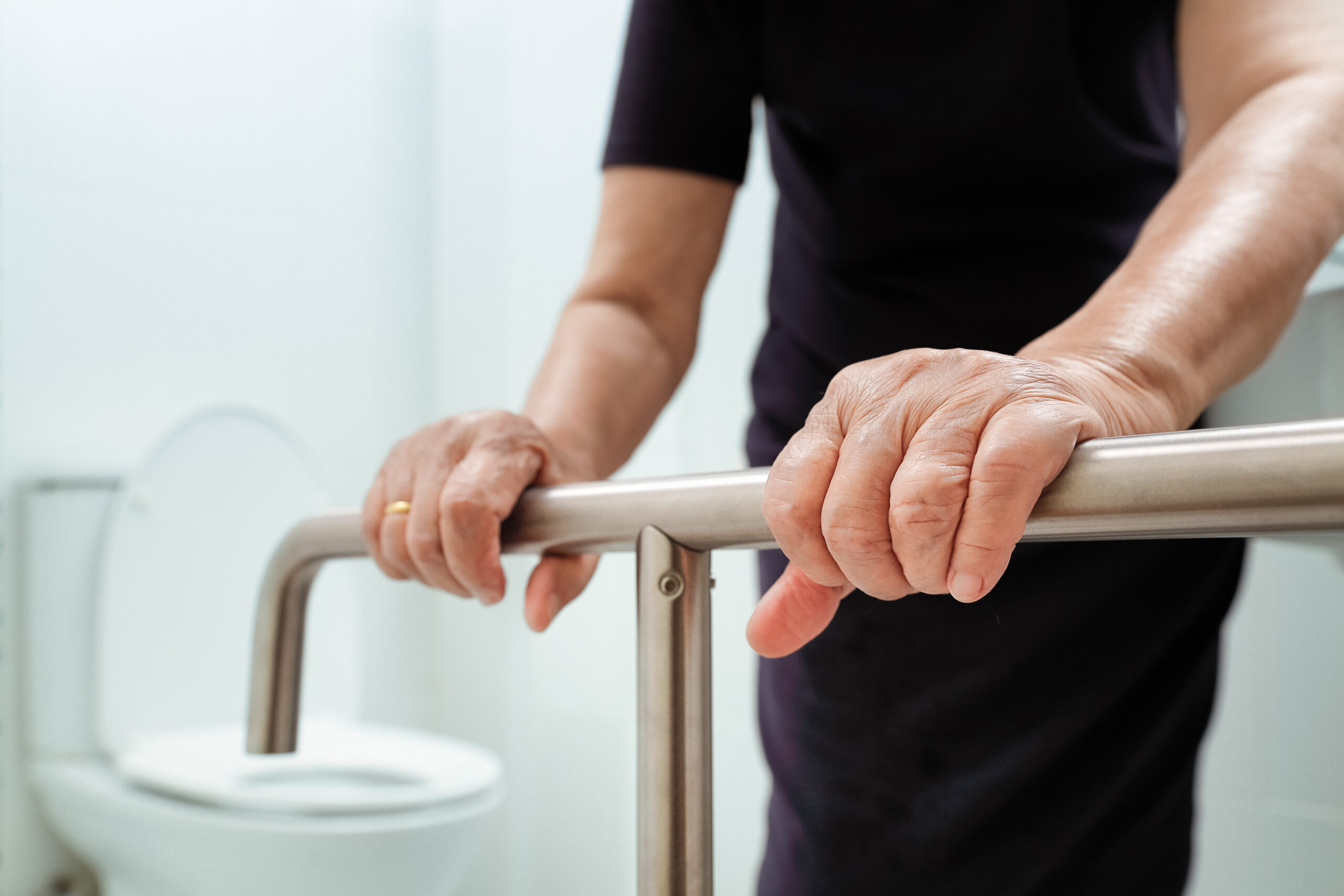
Bathrooms are a place to relax and unwind. But despite being a peaceful haven, bathrooms have a few hazards we must watch out for. Floors and bathtubs can become wet and slippery, and accidents can happen.
A room that typically features hard styles of flooring, such as tiles, and a bathroom is a place where slips and falls can easily occur, especially if surfaces are wet and slippery.
According to the National Institute on Ageing, more than one in four people over the age of 65 falls each year and almost 80% of falls in the home occur in the bathroom. It isn’t just older people who need to be mindful of bathroom safety; as a room that features more hard surfaces than most, we all should be aware of the potential for injury in this area.
Fortunately, there are a few steps and modifications that you can take to reduce the risk of bathroom hazards for both seniors and other adults or children in your home.
In this blog post, we’ll discuss our top tips for improving your bathroom health and safety, so you can relax knowing that your bathroom is a safe space for your family.
Request a Free Brochure
Simply fill out a quick form and see how we can transform the way you bathe.
Request Free Brochure
- Installing grab bars
- Use non-slip mats, and rugs
- Install flooring with non-slip surfaces
- Install a shower bench or chair
- Install an elevated toilet seat
- Install a walk-in shower or bathtub
- Remove clutter and keep essential items within reach
- Add easy turn taps
1. Installing grab bars
Grab bars are one of the simplest and most effective ways to make a bathroom safer, especially for seniors or anyone with disability bathing needs. Grab bars are bars that provide support and stability in the bathroom.
Grab rail positions are important and can be placed in different areas of your bathroom, such as in your shower or bath or beside your toilet, to help get up and down safely and in a controlled manner.
There is a range of different grab bars available with different finishes. You can choose a design that not only meets your practical needs but also fits with the design of your bathroom. You can also choose the level of grip you require with your grab bar.
Grab bars are a great safety feature as you can place them in the area you need them most, so you or your family member will have extra stability in those tougher to navigate areas. Find out more about grab bars.
2. Use non-slip mats, and rugs
Slips and falls are much more likely to happen on wet surfaces (Health and Safety Executive). This is why using non-slip rugs and mats in your bathroom is so important. Having a bathroom mat in locations such as beside your shower and bath, and near your toilet can help prevent excess water from causing your floor to become slippery.
Try to choose mats and rugs with an anti-slip backing or consider a mat with suction cups on the underside. This will help grip your bathroom floor more securely, so you’ll have a mat you can dry your feet on after showering and one that will stay securely in place.
You can also get rubberised mats for inside your shower and bath. These mats are designed to be waterproof, and they help prevent accidents by adding a grip to the base of your shower and bathtub.
3. Install flooring with non-slip surfaces
The type of flooring you use in your bathroom can also improve your safety. To reduce the risk of falls, you should opt for flooring with a non-slip finish. There are many different options for bathroom flooring that provide extra grip and stability, such as vinyl or rubber flooring.
These materials are designed to be more robust and water-resistant than other forms of flooring, so they can help prevent accidents and make your bathroom a safer environment.
4. Install a shower bench or chair
Standing for extended periods can be difficult for elderly people, or those who have difficulty with mobility, especially in a shower or wet room. You can provide a safe, comfortable place to sit while showering by installing a shower bench or chair.
Choose a sturdy chair or bench that suits the user’s weight and needs. Choosing a model with a backrest and armrest can also provide additional stability and support for the user.
5. Install an elevated toilet seat
Sitting down and standing up from a low toilet can cause issues for seniors or people with mobility issues.
High toilet seats can help make the process of getting on and off the toilet by reducing the distance you need to lower yourself. There is a range of options, so you can choose the one that best suits the user’s needs.
6. Install a walk-in shower or bathtub
Refurbishing your bathroom can be a great way to bring your bath and shower up to standard to meet you or your loved one’s changing needs. Walk-in showers and bathtubs are designed to provide a comfortable and safe experience when bathing.
Walk-in showers come with a wide door, allowing users to walk in easily. They also have non-slip surfaces, and some have a built-in seat for extra support.
Walk-in baths are also becoming increasingly popular as they make bathing easier to manage for those with mobility issues; they feature a door to allow easy access to the bath and a raised seat to make getting in and out as easy as possible.
7. Remove clutter and keep essential items within reach
This tip is simple yet effective. Clutter can make it harder to move around the bathroom and increase the risk of tripping. Removing unnecessary items from the bathroom on a regular basis or adding additional storage to ensure the bathroom is always clean and tidy can help reduce risk.
Solutions such as additional shelving can ensure that essentials like soap, shampoo and conditioner are always within reach, so no bending down or stretching is required to get these items. Additionally, keeping floors and surfaces clean can ensure that there is no residue from bathing products left over, which could cause slips or falls.
8. Add easy turn taps
Taps with long levers and smooth actions are a great modification to make use easier for seniors or anyone with conditions such as arthritis that could affect mobility. Easy turn taps can give you more control and make turning on and off the tap smoother, allowing for easier control of temperature and water flow
These are just a few of the modifications you can make to your bathroom to ensure it is as safe and comfortable as possible. Taking extra care when designing or renovating your bathroom will give you peace of mind knowing that you or your loved one’s safety is taken care of.
With these tips at hand, your bathroom can be a safe place where you can bathe and wash without the worry of potential slips and falls. These features offer safety and security and thanks to the wide range available, you can tailor your bathroom modifications to meet individual needs and even choose options that are not only practical but look fantastic too.

by mobilityplus | 17th Jul, 2021 | Health

With more and more people considering their impact on the planet, it is no surprise we are looking at our food choices as one of the ways to help with sustainability. The meat and dairy industries have come under scrutiny for their part in causing damage to the environment, via greenhouse gases from livestock, deforestation and water shortages from farming, and vast ocean dead zones from agricultural pollution.
People all over the planet are adopting diets to support this movement. Ranging from flexitarians (a person who has a primarily vegetarian diet but occasionally eats meat or fish) to vegetarians (no meat) to vegans (no animal products at all). However, people are not just looking to reduce their carbon footprint. Many are looking at these lifestyle changes to improve their health too.
Diet that helps arthritis
Scientists have long known the anti-inflammatory effects of plant foods and how one can positively affect health issues, such as arthritis, by focusing on what’s on their plate. But does a vegan diet help reduce arthritis symptoms and pain?
This appears to be heavily dependent on what type of arthritis is the focus. Adopting an ‘anti-inflammatory diet’ rich in plenty of fruits, vegetables, whole grains and legumes, for an inflammation-led disease such as Rheumatoid Arthritis (RA) has had promising results in trials. One study found that 4 weeks on a low-fat vegan diet improved RA joint pain, stiffness, and swelling. There is also an interesting link with improving the ‘good bacteria’ in your gut by eating more fibre from a higher plant diet. These bacteria help to keep inflammation in check and support the immune system.
Furthermore, studies show that people who follow a vegan or vegetarian diet are less likely to be overweight or obese compared to their meat-eating counterparts. The impact of weight on the joints and bones significantly drives factors that contribute to Osteoarthritis (OA) and RA.
One of the most beneficial type of diet for arthritis so far is the so-called “Mediterranean diet”, which promotes the intake of fruits, vegetables, and nuts as well as certain types of fish for increased omega-3 intake. Therefore, while the idea is still a nutrient dense diet focusing on vegetables, leafy greens, beans and wholegrains certain non-vegan foods could still provide beneficial for decreasing inflammation.
Is meat & dairy the problem?
What the studies don’t show clearly however, is if it is the animal products causing the issues of inflammation and weight gain or if it’s the overconsumption of animals, unhealthy habits and processed foods that accompany the majority of people following a typical Western Diet. The issue is more complex than “plants good, animals bad,”. Vegan diets tend to include more healthy foods in general as well as healthy lifestyle choices such as exercise and being in nature. Meat eaters as a group tend to eat more processed foods (pizza, burgers, cheese) and are more sedentary, which can trigger inflammation.
Some studies also suggest a possible link between chronic inflammation and saturated fats found in red meats, full-fat dairy foods, butter and poultry skin, while fats found in olive oil and avocado does not have the same effect
There is yet to be a study on a population who eats mostly plants, some animal products and adopts healthy lifestyle choices and the impact on arthritis, however.
Likewise, you can be vegan and still eat plenty of foods that will not help your arthritis symptoms or contribute to a healthy diet. For example, sugar, chips, alcohol, white bread and meat substitutes, which all come from plants, can trigger inflammation.
More anti-inflammatory plants
What is clear is the impact on having more plants in the diet is good for both your health outcomes and the planet. No wonder why the vegan anti-inflammatory diet is so popular with people with arthritis, people who focus on a diet with more fruits, vegetables, legumes, nuts and seeds, healthy fats and whole grains (i.e., brown rice and barley) instead of refined carbohydrates like white pasta, bread or rice are increasing their body’s nutrient stores to support repair mechanisms in the body.
These plant foods are also packed with phytochemicals (plant-based compounds) that include antioxidants, flavonoids and carotenoids, all of which protect the tissues from oxidation and help reduce inflammation.
Possible problems with plant-based diet
If adopting a vegetarian or vegan diet sounds appealing for your arthritis, consider what you may need to supplement or provide more of in your diet.
These include; vitamin B-12 (which are only found in animal products and essential for brain function) omega-3 fatty acids (which also reduce inflammation and support cell-communication), iron (to protect against potential anaemia), zinc & vitamin D (for the immune system), calcium (for bones support) and selenium & iodine (for a healthy thyroid).
One of the main areas of consideration we hear when people talk about veganism is protein intake. While protein intake changes based on how much we weigh and how active we are, the general daily intake for the average adult ranges around 0.8 grams of protein per kilogram of body weight, or 0.36 grams per pound.
That means that the average sedentary man should eat about 56 grams of protein per day, and the average woman should eat about 46 grams – but that’s only the bare minimum to hit in order to not experience negative side effects.
One thing to consider however is that older adults have significantly increased protein needs – up to 50% higher than average, or about 0.45–0.6 grams per pound (1–1.3 grams per kg) of body weight.
For this reason, it is best to add a protein source to each of the 3 main meals a day to ensure the basic needs are met. The most popular source of protein for vegans are beans, chickpeas, nuts, and tofu – all containing enough protein to cover the daily intake if consumed at a proper amount.
For example, a large egg, which is a favoured source of protein for non-vegans has only 6g of protein and both beans and chickpeas contain about 15 grams of protein per cooked cup (240 ml) so adding them in to your dishes in any format can help ensure you meet your needs.










